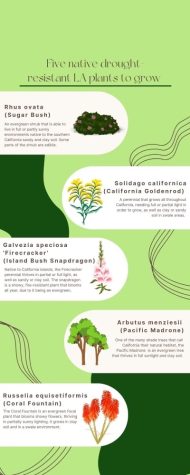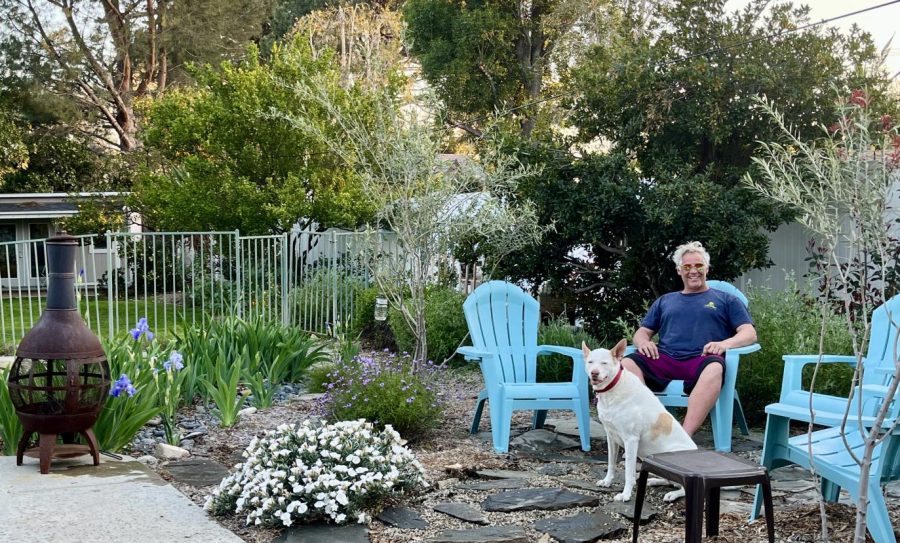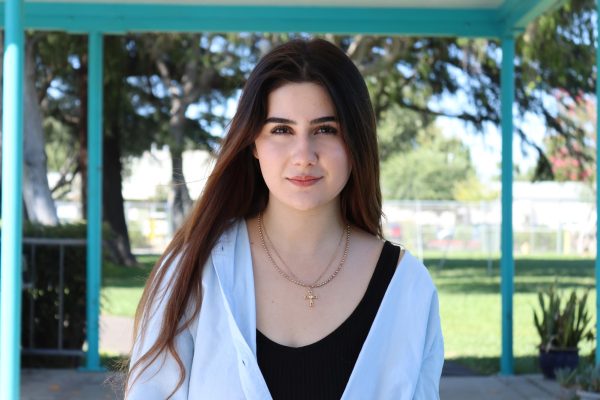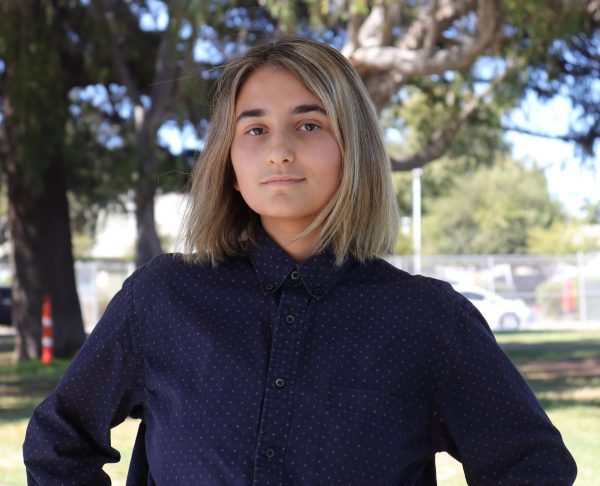Teacher nurtures native plants
Photo provided by Wes Hambright
Music teacher Wes Hambright sits in his garden with his dog. The garden is in the process of being replanted with native plants instead of non-native plants.
April 14, 2023
Music Teacher Wes Hambright has been on a mission to bring native plants back to his backyard in order to create a more wildlife-friendly environment. Over the past 12 years, Hambright has been growing hundreds and hundreds of plants, including many native species, in his garden.
“We are very into wildlife and nature,” Hambright said. “And we have found that the more native plants or at least drought tolerant things that you can have in your yard, the more it attracts wildlife.”
Recently, he and his wife have been working on a project to remove non-native plants such as roses and irises from their garden, replacing them with native and drought-tolerant plants to better support local wildlife. In an effort to attract more wildlife, Hambright also avoids the use of any pesticides in his garden. This decision has had a noticeable impact on the number of monarch butterflies that have been attracted to his backyard, offering them a safe haven from the harmful effects of pesticides. Hambright’s commitment to creating a natural and sustainable habitat for wildlife allowed for the monarch butterflies to create cocoons and hatch in his very own backyard.

Hambright is committed to eliminating invasive plants from his garden, aiming to create a space that is both sustainable and ecologically responsible. To achieve this goal, Hambright focuses on growing native plants that require little water, such as sage and lavender. By doing so, he not only supports local wildlife but also reduces his overall water usage, making his garden a more environmentally friendly space.
According to an article by the California Native Plant Society, “California native gardens are sustainable, save water, and provide habitat for many wildlife species.” This providing of habitat can expand species diversity and help bridge to nearby remaining wildlands.
Projects as complex as Hambright’s come with their fair share of difficulties. Finding plants native to the region has been a struggle for his family.
“A lot of it is gone,” Hambright said. “We’ve replaced it with things that are from other places around the world, but what that does is it tips the wildlife.”
Hambright believes that wildlife is forced to adapt when exposed to a non-native environment, resulting in a decreased ability to flourish. As such, a significant aspect of Hambright’s mission is to restore the region to its original state, as far as plants and wildlife.
“We like nature and want to see it thrive and knowing about global warming, we’re just trying to make our difference through local change,” Hambright said.









